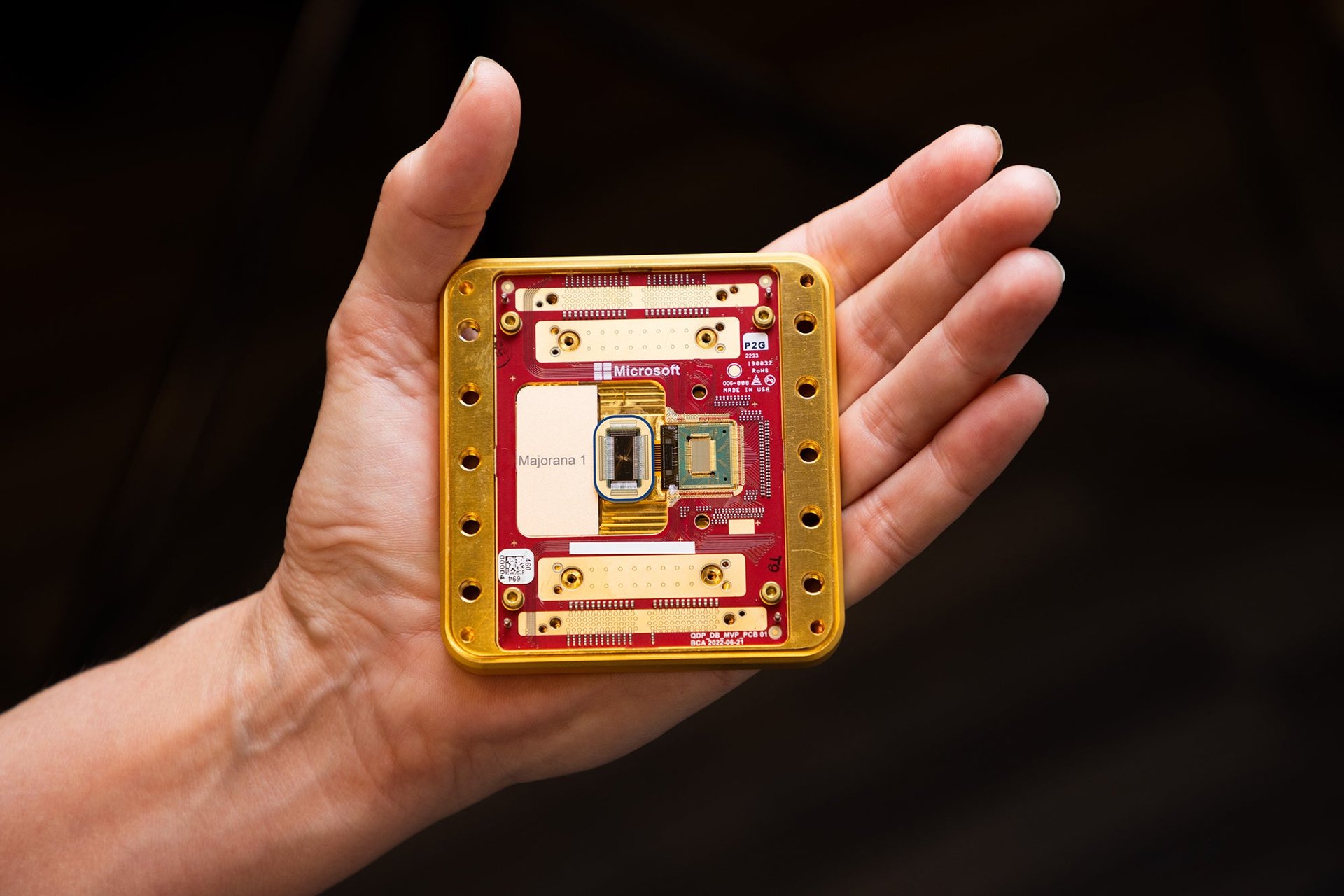Microsoft created a new type of matter for its quantum computing chip
Microsoft has worked on the new state of matter for almost two decades

Microsoft (MSFT) is changing what you learned about the states of matter in elementary school with a creation that it said will advance “the path to useful quantum computing.”
Suggested Reading
As part of what it calls the “year to become Quantum-Ready,” the company unveiled its first quantum computing chip, Majorana 1, built with “topological superconductors” or “topoconductors” — a “breakthrough” material that enabled the company to create a new state of matter called “topological superconductivity.”
Related Content
Quantum computers typically use quantum bits — or qubits — which are usually electrons, photons, or another subatomic particle. Connected together, qubits have far more processing power than binary 0s and 1s that classical computers use. Unlike classical binary bits, qubits can be 0 and 1 at the same time in a state called superposition. The more qubits that are used, however, the more errors usually occur in a computation.
Microsoft claims its solution to reducing those errors lies in the topoconductors. Unlike familiar solids, liquids, and gases, this new state of matter occurs when electrons pair up and flow with zero resistance while being protected by special mathematical properties that make them extremely stable.
The new state of matter, which Microsoft has worked on for almost two decades, makes it possible for quantum systems to scale to one million qubits on a single, hand-sized chip, the company said, adding that it has demonstrated the world’s first topological qubit and already placed eight on Majorana 1. At one million qubits, a quantum computer could perform far more difficult calculations than traditional computers with higher accuracy.
“[Q]uantum computing at this scale could lead to innovations like self-healing materials that repair cracks in bridges, sustainable agriculture, and safer chemical discovery,” Chetan Nayak, corporate vice president of quantum hardware at Microsoft, said in a statement. “What today requires billions of dollars in exhaustive experimental searches and wet-lab experiments could be found, instead, through calculation on a quantum computer.”
Because these specially protected qubits are smaller, faster, and more reliable than traditional qubits, Microsoft said it could build a working prototype of an error-free quantum computer in just years rather than decades. The company calls this a “fault-tolerant prototype” or FTP.
“Imagine a chip that can fit in the palm of your hand yet is capable of solving problems that even all the computers on Earth today combined could not,” Microsoft chief executive Satya Nadella wrote on X. “This is our focus: When productivity rises, economies grow faster, benefiting every sector and every corner of the globe.”
Despite the excitement, Microsoft customers won’t be able to use the Majorana 1 chip through its Azure public cloud, CNBC (CMCSA) reported, as Microsoft continues its research with national laboratories and universities.
Quantum computing stocks climbed off of the announcement, with D-Wave Quantum (QBTS) shares jumping more than 8%, Quantum Computing (QUBT) rising 7.8%, and Rigetti Computing (RGTI) shares up almost 5%.
Earlier this year, quantum stocks plunged after both Nvidia (NVDA) chief executive Jensen Huang and Meta (META) chief executive Mark Zuckerberg cast doubts about the technology’s near-term potential.
During the chipmaker’s financial analyst day at the Consumer Electronics Show in January, Huang said useful quantum computers are likely decades away.
“If you said 15 years for very useful quantum computers, that would probably be on the early side,” Huang said. “If you said 30, it’s probably on the late side. But if you picked 20, I think a whole bunch of us would believe it.”
However, Nvidia announced that it will host its first Quantum Day at its GPU Technology Conference in March. Nvidia will also unveil quantum computing “advances shortening the timeline to useful applications,” the company said.